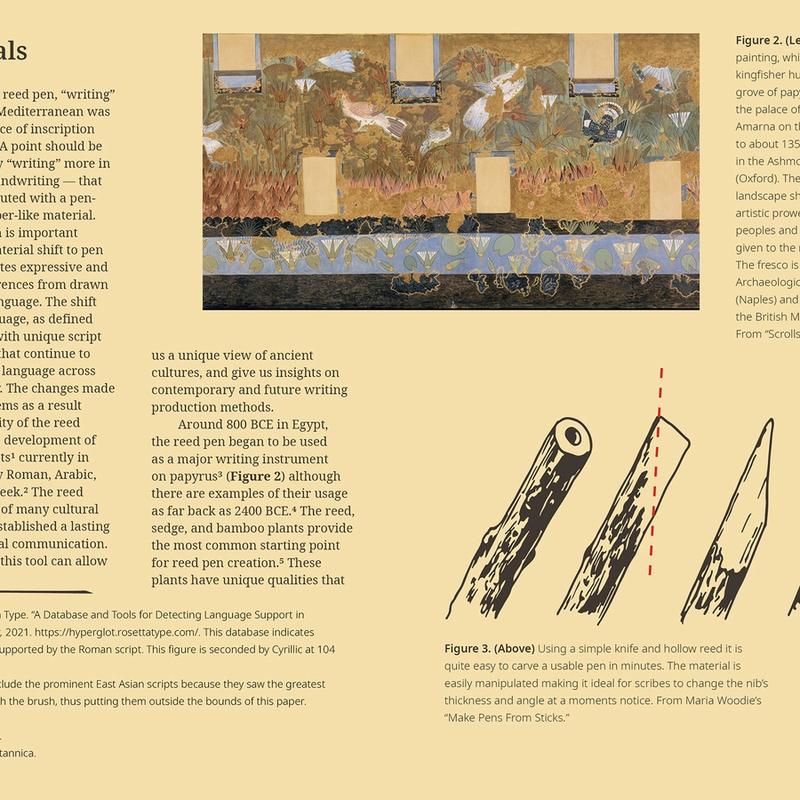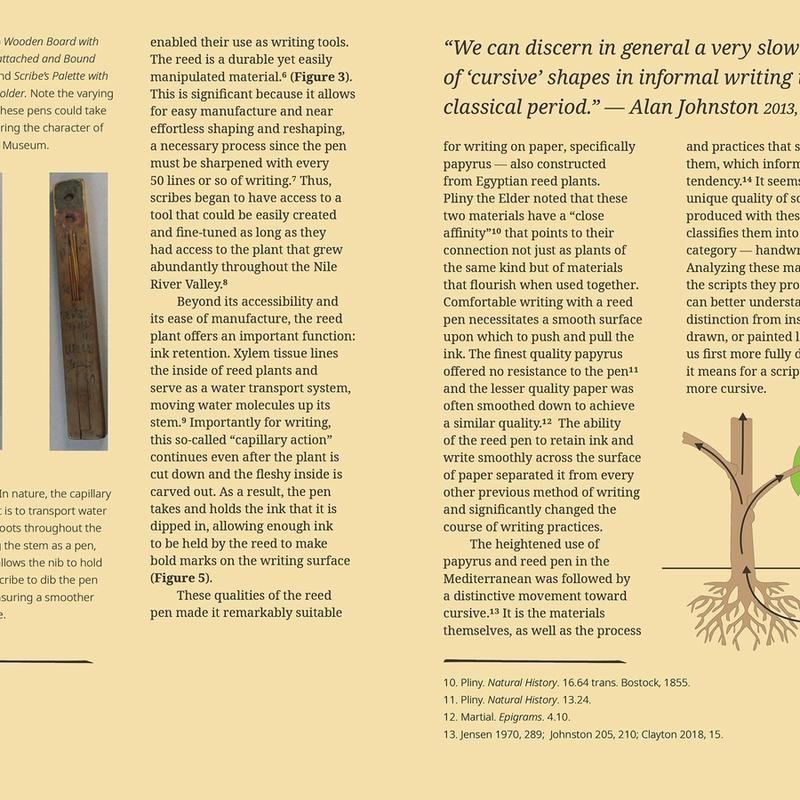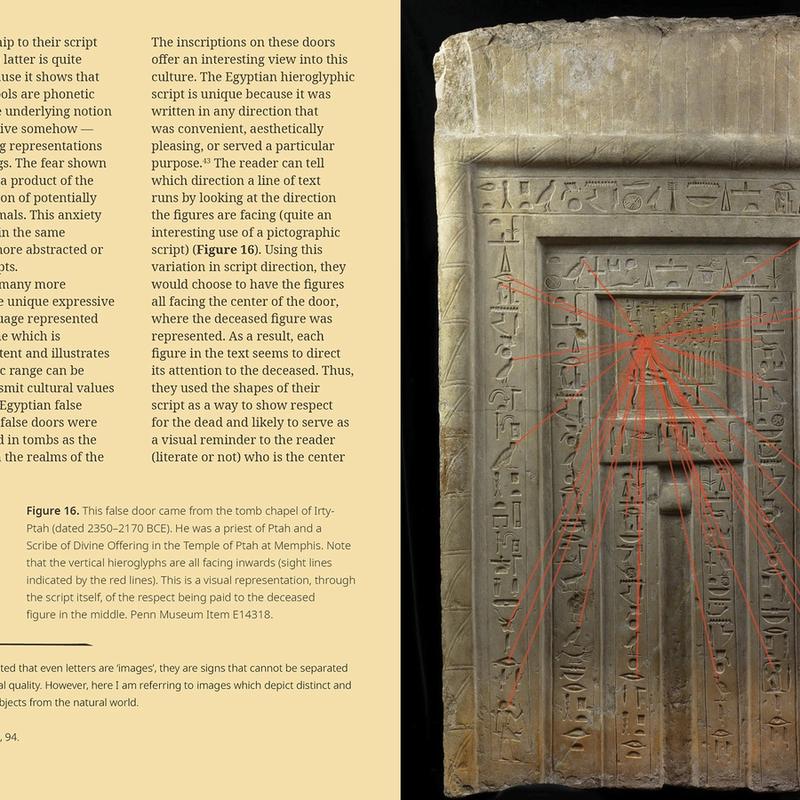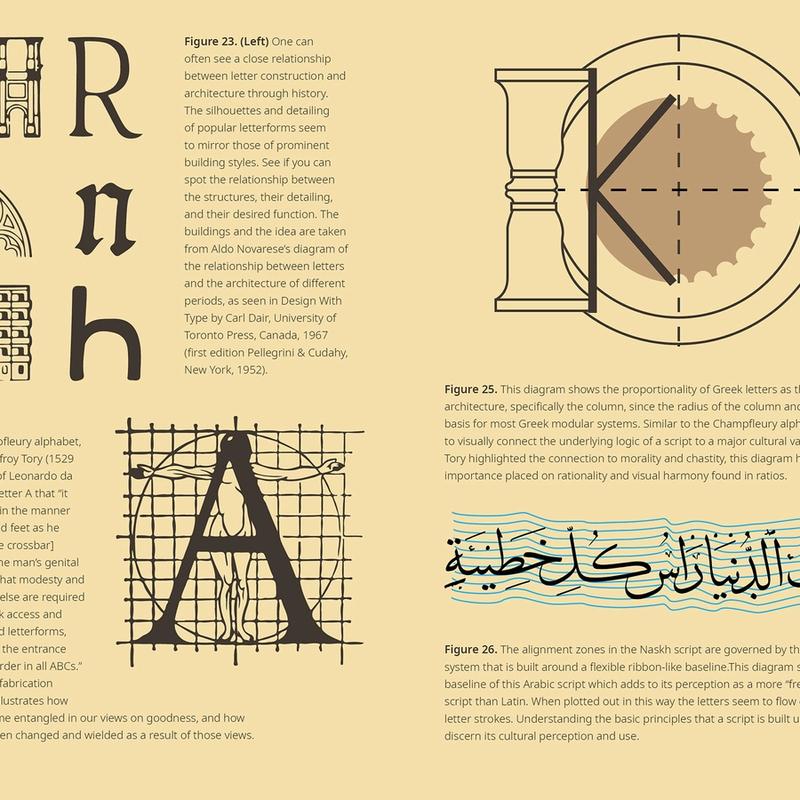Student work
Reed This
The research project on writing by Andrew Salisbury was awarded the Binghamton University Summer Scholars & Artists Program. The sub-title of the publication changed from the originally submitted “an Account of the Broad Nibbed Pen and the Shift in Cultural Paradigms” to “Ancient Culture Through Writing Practice and Material.”
As Brody Neuenschwander writes, “each tool brings with it the message of its past use.”
My plan to support the student throughout the proposed activity started by opening a digital workspace in which we could collaborate, similar to the environment I use for my remote classes. The workspace facilitates the exchange of visual and textual information, feedback, and discussions.
The end-product of Salisbury’s investigation was a 6×9" 48-page graphic booklet, to which he wrote a compelling synopsis:
“Language is the medium through which humans communicate. From the very beginning of recorded history, humans have been developing visual symbols to register this communication. These symbols and the shapes they take have a close relationship to the culture they are developed by and for. When language takes a visual form it is not only a recording of speech but also a recording of motion and cultural ideals. Through an understanding of the material circumstances involved in the development of a script, we can dissect the expressive range of the shapes made with these materials. From here, we understand scripts and letterforms not as random or predetermined shapes but as points of relevant cultural and individual decisions.
The reed pen is a tool of paramount importance in this process. In use for thousands of years throughout the Mediterranean, it influenced the development of incredibly widespread scripts. Using the reed pen as the major material circumstance for the Egyptian, Greek, and Latin scripts, a distinction can be made between written, drawn, and inscribed text. These material differences are naturally tied to particular movements in the recording of marks. These differences allow for distinct expressive ranges that can be used to communicate various cultural ideas. This cultural communication, which goes beyond the linguistic recording, is built on this long history of sign construction informed by material factors. Using the reed pen as it is connected to Egyptian, Greek, and Roman culture, a method of analysis is created with which any script or typeface may be seen as expressing certain principles. This grants us a new and important lens with which to view culture, ancient and contemporary alike.”
Reed This: Ancient Culture Through Writing Practice and Material by Andrew Salisbury starts with a pun, a challenge to write, to do one of the most simple yet complex of human activities, to experience text as the interface between knowledge and human. Rarely I have seen a young student in graphic design nailing down the question of why we write and how we write so well and so deep, with the consistency of inconsistency typical of calligraphy, and with love for the research process itself. This book is a little gem: read it.
The project is documented with process work by Salisbury on his website.
Material: Pencil, paper, reed pen, ink, Illustrator, Photoshop, InDesign.





